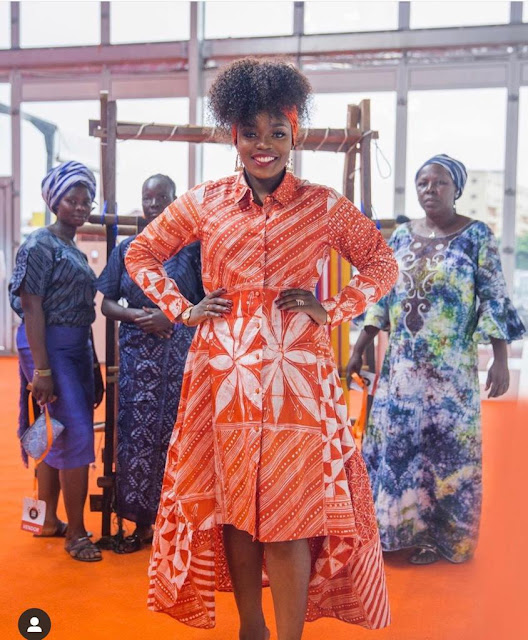Adire is a traditional print that has become prominent and
recognized across the globe, because of its uniqueness and versatility. Adire
is the indigo-dyed cloth made in southwestern Nigeria by Yoruba women, using a
variety of resist-dyeing techniques.
Abeokuta is considered to be the capital of Adire making in Nigeria, other cities like Ibadan
and Osogbo are crucial in Adire making because Adire dyeing began in Abeokuta
when Egba women from Ibadan returned with this knowledge.
There are three primary techniques used in Nigeria to produce
Adire.
Onikan: this process involves tying raffia around hundreds of
individual corn kernels or pebbles to produce small white circles on a blue
background . The fabric can also be twisted and tied on itself or folded into
stripes.
Alabere: stitching raffia on the fabric in a pattern prior to
dyeing. The raffia palm is stripped and spine sewn into the fabric, after
dyeing the raffia is usually ripped out, although some choose to leave it in and let wear and tear on the
garment slowly reveal the design.
Eleko: resist dyeing with cassava paste painted onto the
fabric. Traditionally done with different size chicken feathers, calabash
carved into different designs are also used in a manner similar to block
printing.
Nigeria is also known for its two-tone indigo resist designs, created by repeat dyeing of
cloth painted with cassava root to paste create a deep blue,the paste is then
washed out ant the cloth dyed a final time. Quality cloth is dyed 25 or more
times to create a deep blue-black color before the paste is washed out.


























0 Comments